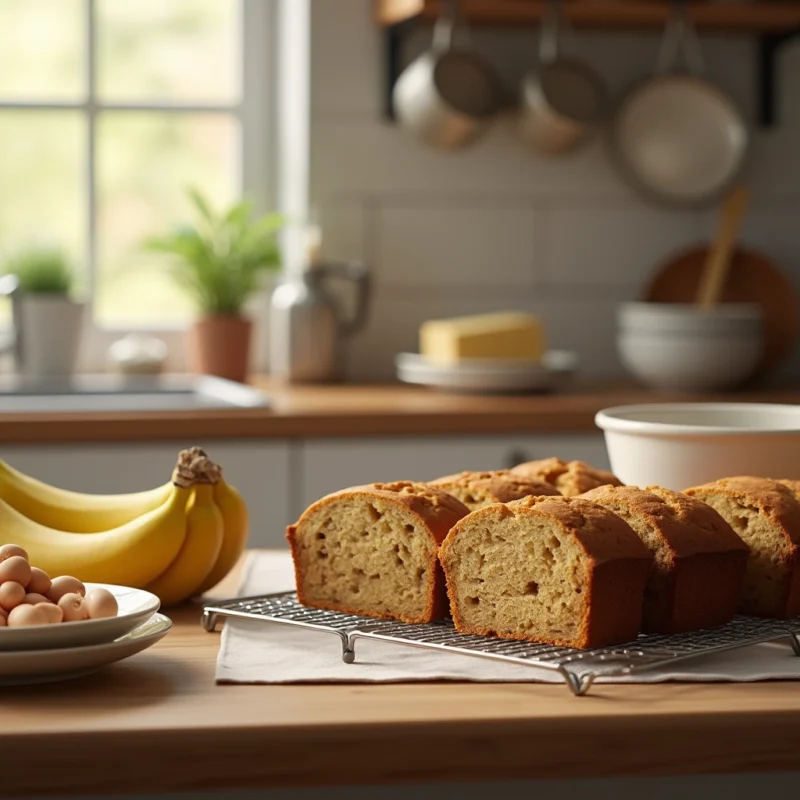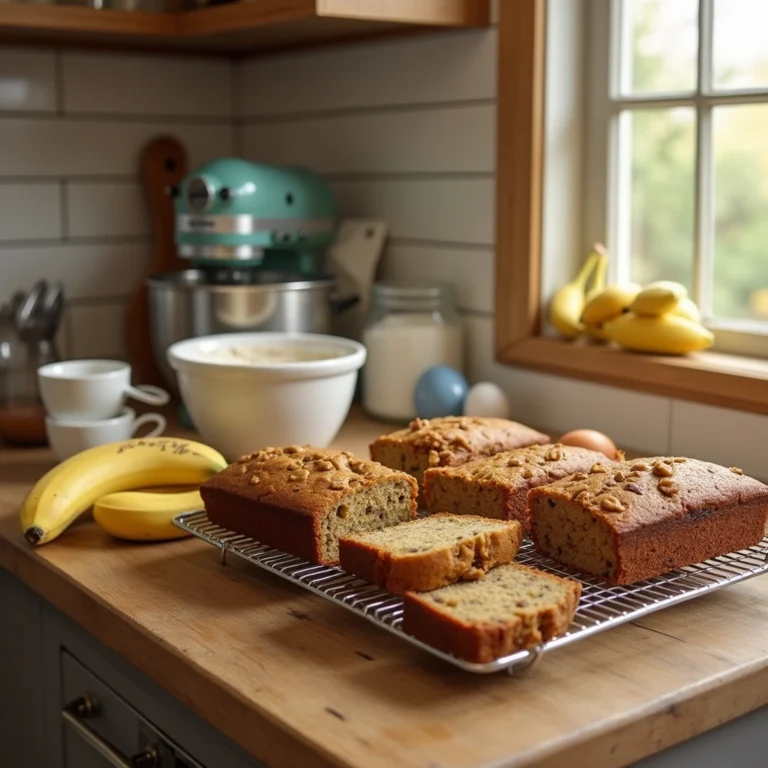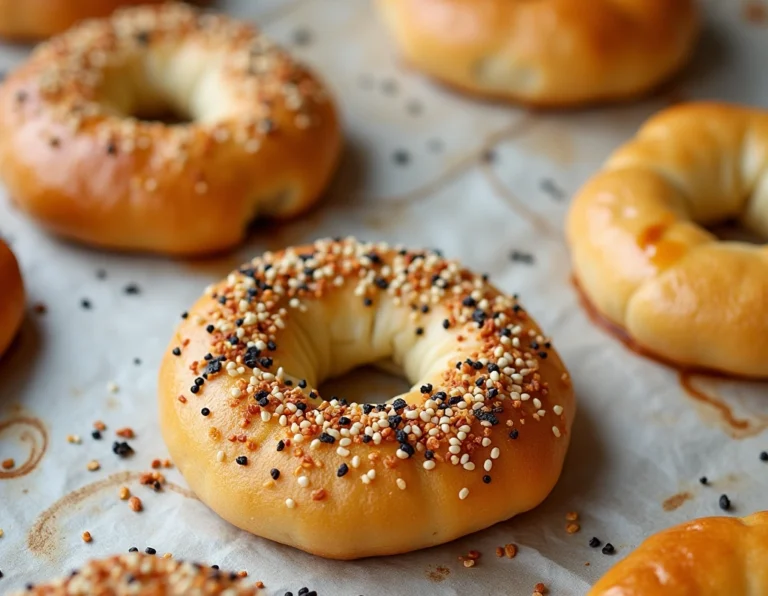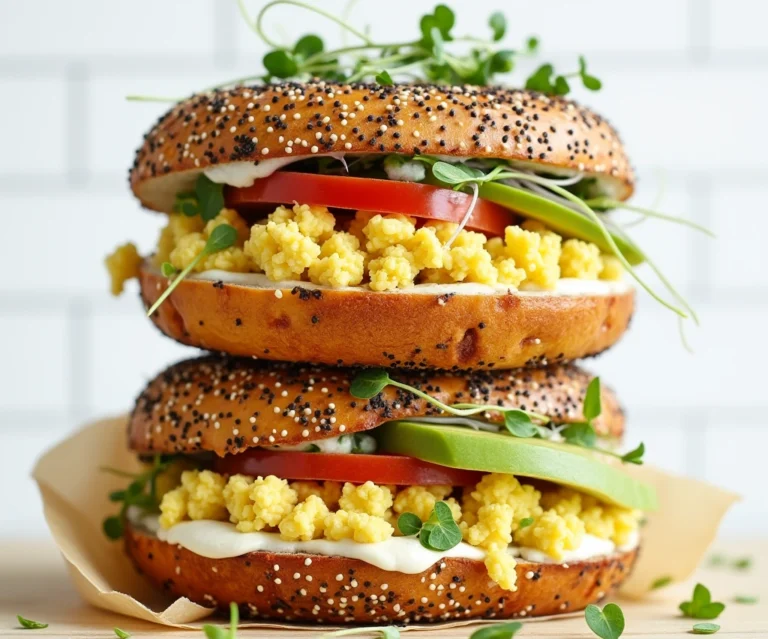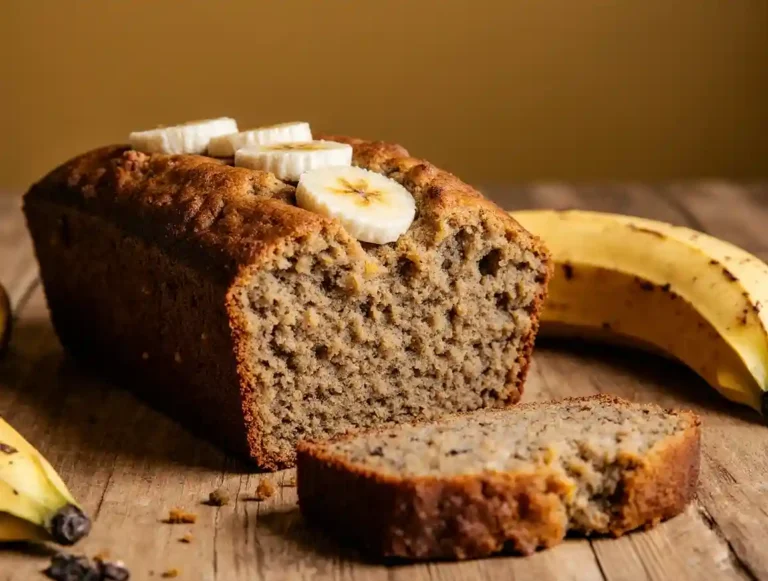What is the formula for banana bread? Easy Recipe
Discover the best formula for banana bread with easy steps and healthier ingredient options to suit every diet. Perfect for any occasion! Contents hide 1 Introduction to the Formula for Banana Bread 2 The Science Behind Banana Bread (What is the formula for banana bread?) 2.1 The Role of Bananas 2.2 The Function of Baking…
Discover the best formula for banana bread with easy steps and healthier ingredient options to suit every diet. Perfect for any occasion!
Introduction to the Formula for Banana Bread
Banana bread is a beloved treat known for its moist texture, rich flavor, and the perfect balance of sweetness and savory notes. But what is the formula for banana bread, and why does it stand out as one of the most cherished homemade baked goods? This easy-to-follow recipe combines simple ingredients, with bananas playing a starring role, and offers a flexibility that allows bakers to create their perfect loaf.
The magic behind banana bread lies in its simplicity and adaptability. Whether you’re baking for a family gathering or simply want to enjoy a delicious snack, this formula is both forgiving and highly customizable. The key is understanding the core ingredients and how they interact to produce a loaf that’s soft, aromatic, and full of flavor.
At its heart, banana bread consists of ripe bananas, flour, sugar, eggs, and a leavening agent such as baking powder or soda. While these ingredients form the foundation of the recipe, variations can be made by adjusting the amounts or adding different mix-ins like nuts, chocolate chips, or spices. With each variation, you get a new twist on the traditional formula.
In this article, we will break down the formula for banana bread and explore each of the essential components. We’ll also delve into the science behind why banana bread has its characteristic texture, why it’s the perfect use for overripe bananas, and how to troubleshoot any issues you may encounter while baking. Whether you’re new to baking or a seasoned pro, the banana bread formula offers endless opportunities for experimentation and enjoyment.
Talking about flavor experiments check these creative banana bread variations on Epicurious.
The Science Behind Banana Bread (What is the formula for banana bread?)
Understanding the science behind banana bread is key to mastering its formula. It’s not just about mixing ingredients and popping them in the oven—each component plays a specific role in the texture, flavor, and overall success of the final product. From the interaction of wet and dry ingredients to the role of heat in the baking process, the science of banana bread is both fascinating and essential for achieving that perfect loaf.
The Role of Bananas
Bananas are the star ingredient in banana bread, and they do much more than just add flavor. Overripe bananas, the kind typically used in banana bread, contain higher levels of sugar, which helps sweeten the bread naturally. The mashed bananas also provide moisture, making the bread dense and tender. The natural sugars in the bananas caramelize during baking, contributing to the flavor and the golden-brown crust. The moisture from the bananas replaces some of the fat, which is why banana bread can still have a soft, cake-like texture without needing too much butter or oil.
The Function of Baking Powder (or Baking Soda)
Leavening agents like baking powder or baking soda are crucial for giving banana bread its rise. Without them, the bread would be too dense and flat. Baking powder works by releasing carbon dioxide when it interacts with liquid and heat, creating air pockets within the batter. These air pockets expand during baking, causing the bread to rise and become light. Baking soda, on the other hand, requires an acidic ingredient (such as bananas) to activate it and produce the same leavening effect. The choice of leavening agent can affect the final texture and flavor, with baking soda imparting a slight tanginess.
How Eggs Affect the Texture
Eggs play an important role in banana bread beyond just binding the ingredients. They help provide structure and stability to the loaf. The proteins in eggs coagulate as they heat up, helping to set the structure of the bread. Additionally, eggs contribute to the bread’s richness and moisture. They also act as an emulsifier, helping to combine the fats (from butter or oil) with the liquids (such as milk or bananas), creating a smooth batter that holds together during baking.
Flour and Gluten Development
Flour is the primary structure-building ingredient in banana bread. When mixed with the wet ingredients, the proteins in the flour (glutenin and gliadin) combine to form gluten. Gluten gives the bread its structure and chew. However, unlike bread dough, banana bread benefits from only a small amount of gluten development. Overmixing the batter can lead to excessive gluten formation, which would result in a tough, dense loaf. To keep the bread light and tender, it’s important to mix the ingredients just until they’re combined.
The Role of Fat
Fat, typically in the form of butter or oil, adds moisture and richness to banana bread. It also helps tenderize the crumb by interfering with gluten formation. The fat melts during baking, creating a soft and moist texture in the finished bread. The choice between butter and oil can affect the flavor; butter adds a rich, creamy taste, while oil tends to make the bread a bit lighter and moister.
The Importance of Temperature and Time
The temperature at which banana bread is baked plays a critical role in its texture. If the oven is too hot, the bread may brown too quickly on the outside while remaining raw on the inside. Conversely, if the oven is too cool, the bread may bake unevenly and be dense. A moderate oven temperature, typically around 350°F (175°C), ensures the bread cooks evenly, allowing the leavening agents to do their work and the moisture from the bananas to create a soft, fluffy loaf.
The baking time is also crucial for the perfect loaf. If you take the banana bread out too soon, it may collapse or remain doughy in the center. On the other hand, overbaking can lead to a dry loaf. The key is to check the bread towards the end of the baking time by inserting a toothpick into the center. If it comes out clean or with just a few crumbs, the bread is done.
In summary, the science behind banana bread is a delicate balance between the ingredients and their interactions. From the bananas’ moisture and sweetness to the leavening agents that give rise to the loaf, every step in the process contributes to the final product. Understanding this science can help you troubleshoot any issues and make adjustments to create your perfect banana bread every time.
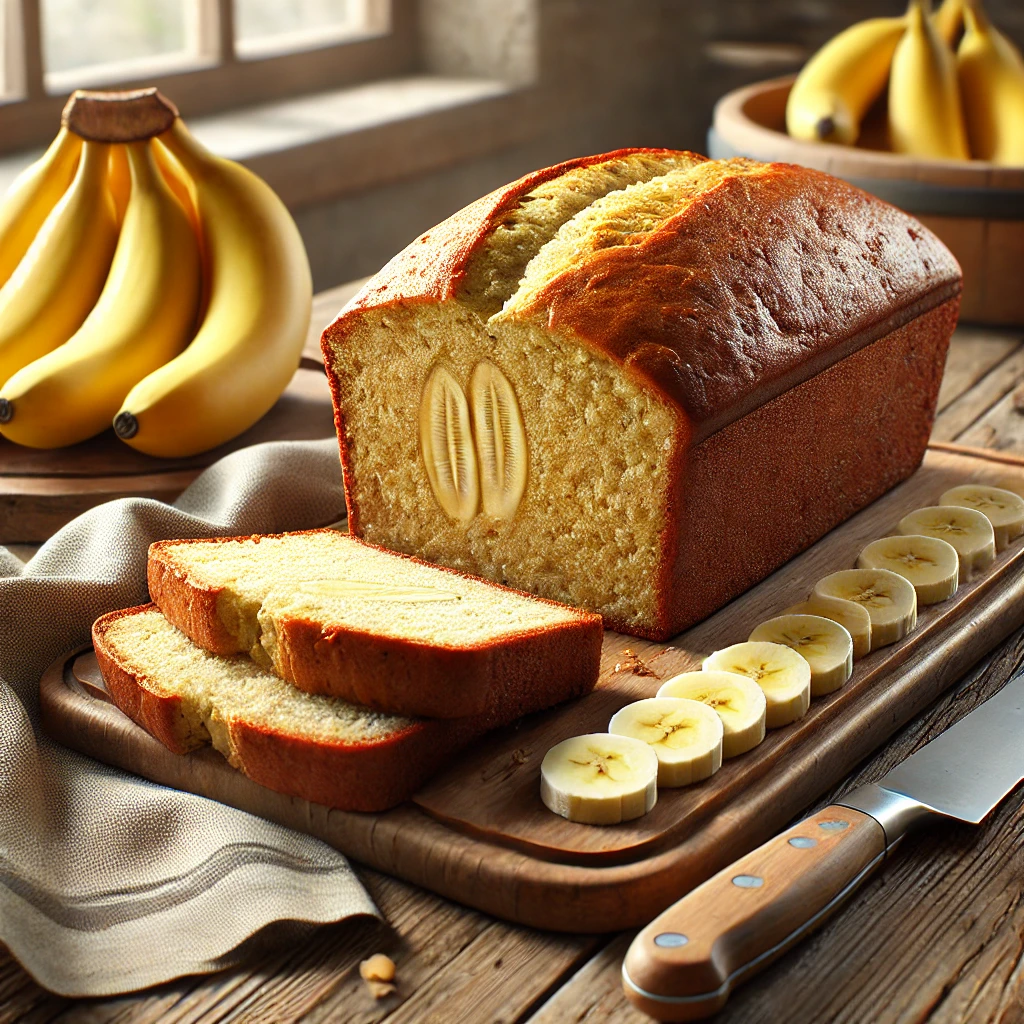
If you’re short on ingredients or time, give this 4-ingredient banana bread a try—quick, simple, and satisfying.
The Step-by-Step Banana Bread Recipe (What is the formula for banana bread?)
Now that you understand the science behind banana bread, it’s time to put your knowledge into action with a simple and foolproof recipe. This step-by-step guide will help you create a delicious loaf of banana bread that’s moist, flavorful, and perfect for any occasion.
Ingredients:
- 3 ripe bananas (the riper, the better)
- 1/3 cup melted butter
- 1 teaspoon baking soda
- Pinch of salt
- 3/4 cup sugar (adjust to taste)
- 1 large egg (beaten)
- 1 teaspoon vanilla extract
- 1 1/2 cups all-purpose flour
Instructions:
Step 1: Preheat the Oven and Prepare the Pan
Preheat your oven to 350°F (175°C). Grease a 4×8-inch loaf pan or line it with parchment paper to ensure the banana bread doesn’t stick while baking. This ensures a clean release and helps with easy cleanup after baking.
Step 2: Mash the Bananas
In a large mixing bowl, peel the bananas and mash them with a fork or potato masher until smooth. The bananas should be well-mashed, with no large chunks remaining. If your bananas are very ripe, they will mash easily and have a slightly chunky texture, which is perfect for banana bread.
Step 3: Mix the Wet Ingredients
To the mashed bananas, add the melted butter and stir until it’s fully incorporated. Next, add the baking soda and salt. Stir well to ensure these dry ingredients are evenly distributed throughout the banana mixture.
Add the sugar and mix until the batter is smooth. Beat the egg and vanilla extract in a separate small bowl before adding it to the banana mixture. Stir everything together until fully combined.
Step 4: Incorporate the Dry Ingredients
Now, it’s time to add the flour. Slowly add the all-purpose flour to the wet ingredients, stirring gently with a spoon or spatula. Mix until just incorporated. Be careful not to overmix the batter, as this can lead to a dense loaf. A few small lumps are okay—just make sure there’s no dry flour left at the bottom of the bowl.
Step 5: Pour the Batter Into the Pan
Pour the batter into your prepared loaf pan. Use a spatula to spread the batter evenly, ensuring that the top is level. This will help the loaf bake evenly.
Step 6: Bake the Banana Bread
Place the loaf pan in the preheated oven and bake for about 60-65 minutes. Keep an eye on it as it bakes. Around the 50-minute mark, you may want to check the bread. If the top is browning too quickly, you can loosely cover the loaf with aluminum foil to prevent it from burning.
To test for doneness, insert a toothpick or cake tester into the center of the loaf. If it comes out clean or with just a few moist crumbs, the banana bread is done. If it’s still wet, bake for a few more minutes and check again.
Step 7: Let the Banana Bread Cool
Once the banana bread is done, remove it from the oven and allow it to cool in the pan for about 10 minutes. After that, turn it out onto a wire rack to cool completely. This helps prevent the bread from becoming soggy as it cools.
Step 8: Slice and Enjoy
Once the banana bread has cooled, slice it into generous pieces and serve. Whether you enjoy it plain, with a pat of butter, or even toasted with a drizzle of honey, it’s sure to be a hit.
This simple banana bread recipe is easy to make and results in a perfectly moist and flavorful loaf every time. By following these steps and understanding the role each ingredient plays, you’ll be able to master the art of banana bread baking and create endless variations to suit your taste. Enjoy your homemade banana bread as a delightful snack, breakfast, or dessert!
Healthier Banana Bread Options
While traditional banana bread is already a comforting and satisfying treat, it can often be high in sugar, fat, and calories. If you’re looking to make a healthier version of banana bread without compromising on flavor or texture, there are several substitutions and modifications you can make to fit a variety of dietary needs. These healthier options can make your banana bread more nutritious while still retaining its moist, delicious qualities.
1. Reducing Sugar and Fat
One of the easiest ways to make banana bread healthier is by reducing the amount of sugar and fat used in the recipe. Here are some strategies:
Reduce Sugar:
Bananas naturally contain a good amount of sugar, which makes them sweet on their own. By using slightly overripe bananas, you can rely more on the bananas’ natural sweetness and reduce the amount of added sugar. You can cut the sugar in half or even substitute with alternatives like stevia, monk fruit sweetener, or erythritol, which provide sweetness without the extra calories.
Substitute with Healthier Fats:
Traditional banana bread often uses butter or oil, both of which contribute to the fat content. For a healthier option, you can replace some or all of the butter or oil with unsweetened applesauce, which adds moisture without the added fat. You can also use a smaller amount of coconut oil, which provides healthy fats and a light coconut flavor.
2. Adding Whole Grains
Instead of using refined all-purpose flour, which is low in fiber and nutrients, try substituting with whole-grain options. Whole wheat flour, oat flour, or spelt flour are excellent alternatives that boost the fiber content of your banana bread. These flours provide more vitamins and minerals, and they help to keep you feeling fuller for longer. If you’re making a gluten-free version, almond flour or coconut flour can be great alternatives to regular flour while still providing a good texture.
Whole Wheat Flour:
Whole wheat flour adds more fiber to your bread, which is beneficial for digestion and overall health. However, whole wheat flour can make the bread denser, so you may want to mix it with all-purpose flour (about 50/50) for a lighter texture while still reaping the benefits of whole grains.
Oat Flour:
Oat flour is another great option, as it adds a mild, slightly sweet flavor and provides additional fiber and nutrients. It’s also naturally gluten-free, making it a good choice for those with gluten sensitivities.
3. Incorporating Nutrient-Dense Ingredients
Banana bread doesn’t have to be just about bananas and flour—it can be an opportunity to incorporate additional nutrients. Here are some ingredients that can make your banana bread even healthier:
Chia Seeds or Flaxseeds:
Both chia seeds and flaxseeds are packed with omega-3 fatty acids, fiber, and antioxidants. Adding a tablespoon or two of ground flaxseeds or chia seeds to your batter will boost the nutritional profile and add some extra texture. These seeds are also great for promoting heart health and aiding digestion.
Nuts and Seeds:
Nuts like walnuts, almonds, or pecans are a fantastic addition to banana bread. They not only add crunch and flavor but are also rich in healthy fats, protein, and fiber. You can chop them finely to evenly distribute them throughout the bread or leave them in larger pieces for added texture.
Dried Fruit:
For a natural sweetness and a burst of nutrients, consider adding dried fruits like raisins, cranberries, or dates. Dried fruits are high in vitamins and minerals, particularly potassium, which pairs well with the natural sweetness of the bananas. Be mindful to use unsweetened varieties to avoid adding too much sugar.
Greek Yogurt:
Substituting a portion of the fat in your recipe with Greek yogurt can add a protein boost to your banana bread while keeping it moist. Greek yogurt also contains probiotics, which are beneficial for gut health.
4. Making it Vegan
If you want to make your banana bread vegan, it’s easy to substitute the eggs and dairy with plant-based alternatives. Here are some options:
Egg Substitutes:
- Flaxseed meal (1 tablespoon mixed with 3 tablespoons water) can be used to replace one egg. The mixture will thicken and bind the ingredients together.
- Chia seeds can also work as an egg substitute. Use the same ratio as flaxseeds for the perfect binding effect.
- Applesauce can be used in place of eggs in some recipes, providing moisture and a slight sweetness.
Dairy-Free Substitutes:
- Use almond milk, soy milk, or oat milk instead of cow’s milk. These plant-based milks provide the necessary liquid while keeping the bread dairy-free.
- Replace butter with coconut oil, olive oil, or vegan butter, which all provide healthy fats and moisture.
5. Sweetening with Natural Sweeteners
To further reduce processed sugar in your banana bread, consider using natural sweeteners that provide some nutritional value along with sweetness.
Honey or Maple Syrup:
Honey or maple syrup can replace refined sugar while adding their own unique flavors. These natural sweeteners are still high in sugars but have a lower glycemic index than refined sugar, meaning they won’t spike blood sugar levels as much.
Coconut Sugar:
Coconut sugar is a great alternative to regular sugar. It has a lower glycemic index and contains some beneficial nutrients like iron, zinc, and calcium. Coconut sugar has a caramel-like flavor that works well in banana bread.
Got leftover banana bread? Don’t toss it! Turn it into a next-level breakfast with this banana bread French toast recipe. It’s the best way to repurpose old slices into a warm, custardy treat.
Frequently Asked Questions (FAQ) for What is the formula for banana bread?
Can I use frozen bananas for banana bread?
Yes, frozen bananas work great for banana bread! Just let them thaw and mash them as usual. In fact, frozen bananas tend to be even sweeter and more moist, making them an excellent choice for this recipe.
How do I make banana bread more moist?
To make banana bread moister, ensure you’re using ripe bananas with plenty of natural sweetness and moisture. You can also add a bit more fat (such as oil or yogurt) or use a combination of oil and butter to enhance the bread’s texture.
How do I make banana bread fluffier?
To achieve a fluffier texture, avoid overmixing the batter, as this can cause the bread to be dense. Use a leavening agent like baking soda or powder, and be sure to measure your flour accurately to avoid using too much, which can weigh the bread down.
Can I make banana bread without eggs?
Yes, banana bread can be made without eggs. Substitute eggs with flaxseed meal, chia seeds, applesauce, or other egg replacers to maintain moisture and binding properties.
How long does banana bread last?
Banana bread typically lasts about 3–4 days at room temperature when stored in an airtight container. To extend its shelf life, you can freeze the bread for up to 3 months.
Can I make banana bread in a muffin tin?
Absolutely! You can make banana bread in a muffin tin, reducing the baking time to about 18-25 minutes. Just make sure to check for doneness by inserting a toothpick or tester into the center of a muffin.
Conclusion (What is the formula for banana bread?)
Banana bread is a timeless classic that is loved for its simplicity and versatility. Whether you’re looking to make a healthier version, experiment with new flavors, or just enjoy a delicious homemade loaf, understanding the ingredients and their roles can help you create the perfect banana bread every time. With a little creativity, you can tweak the formula to suit your dietary preferences and make this comfort food your own. Happy baking!
Try a nostalgic version banana nut bread recipe, or go tropical with Maui banana bread secrets. Add chocolate chips, coconut, or even peanut butter to shake things up.

What is the formula for banana bread? Easy Recipe and Healthier Options
Ingredients
Method
- 1. Preheat the oven to 350°F (175°C). Grease a 4×8-inch loaf pan or line it with parchment paper.
- 2. Mash the bananas in a large mixing bowl until smooth.
- 3. Add the melted butter, baking soda, salt, and sugar. Stir to combine.
- 4. Beat the egg and vanilla extract, then add to the banana mixture. Stir again.
- 5. Gradually add the flour to the mixture, stirring until just incorporated. Do not overmix.
- 6. Pour the batter into the prepared loaf pan, spreading evenly.
- 7. Bake for 60-65 minutes, or until a toothpick inserted comes out clean.
- 8. Let the bread cool in the pan for 10 minutes, then remove from the pan and cool completely on a wire rack.

